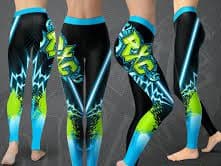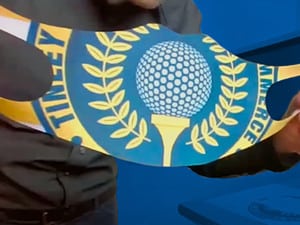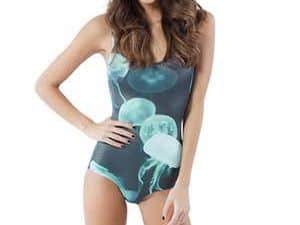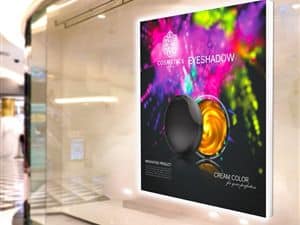Digital Textile Printing, Cutting and Sewing - Entire Processing Solutions
Redshift provides turnkey solutions for the textile digital printing industry, involving fabrics, printing equipment, inks, calenders, transfer paper, laser cutters, sewing machines and more. We are happy to help you choose everything you need for your textile printing plant from raw materials, equipment, consumables and accessories.
What you should know about digital printing on textiles?
Digital printing is replacing traditional methods in different branches of the graphics industry. There are multiple reasons for this shift but the main drivers are the cost-efficiency, possibility to personalize prints and the flexibility of these machines.
This is no different in the textile printing business. Traditional screen-printing is replaced by digital textile printing solutions like sublimation printing for shorter production runs and prints that require multiple colours and photographic imagery. The digital alternatives are ideal for the personalization of prints, which is extremely popular nowadays.

What is dye sublimation printing?
Sublimation printing is a technique that uses heat sensitive inks. These inks turn into gas under the influence of heat and combine with a 100% polyester medium. Since the ink becomes part of the structure of the material, the images on the fabric don’t fade or crack – even after multiple washings.
What do you need for textile digital printing business?
It is not easy to introduce all aspects of dye sublimation printing, so we have prepared a lot of information on this page for you to delve into. To make sure you can find the information you want quickly, we have prepared this content directory that will jump to the corresponding location when you click on it.
General Applications For Digital Textile Printing










Manufacturing Process of Sublimation Printing
How to choose a good sublimation printer:
- Vivid & Sharp Color Transfers
- Deep Neutral Black Tones
- High Strength Formula for lesser ink loads
- Excellent Dry Performance on thin coated media
- Clog Free Nozzles for 24×7 printing
- Excellent performance for fast start up
The optimal solution:
Take A Dive into Digital Textile Inks
There are 4 standard types of digital textile printing inks:
Disperse Inks
Disperse inks are used in the dye-sublimation printing process. These inks infuse into and actually dye the fabric, becoming part of the textile itself. Disperse Inks are used on polyester, acetate rayon, poly-Lycra® and acrylics.
Reactive Inks
When the dyes in reactive inks are applied and fixed to pretreated fabric, they create a chemical bond with the cellulose in that fabric. Reactive inks do best on linen, rayon, nylon and other cellulosic materials.
Acid Inks
Acid inks require pretreated fabric for fixation and are printed directly to the textile then steamed to set the ink. Acid dyes are best for wool, silk, polyamides, cashmere, angora and nylon and require post treatment.
Pigment Inks
Pigment works on cotton and natural fabrics. Where sublimation creates permanency when the dye is encapsulated into a polymer, pigments are bonded to natural fabrics using binders and a heat calender process.
We have a complete range of inks for all machine models and head technologies. This range is mainly focused on the textile sector: Transfer Sublimation, Disperse Sublimation, Direct Printing and the latest generation Pigmented Inks.
Above all, all our Inks have been developed with the commitment to offer the highest color quality , high density, durability and smoothness adjusted to each type of print head in terms of density – temperature – firing frequency. Certainly, these data are backed by professional technicians with extensive experience in the sector and also by the most demanding quality certificates, such as the Oeko-tex® certificate.
They are special inks for applications in fashion textiles, home textiles , sportswear and for multiple applications in decoration and interior design.
Transfer Paper used in Dye Sublimation
Transfer paper is a medium used in digital sublimation printing. Special sublimation ink is applied to it by digital printers in the form of a mirror image. This is then transferred to the final medium. There are different quality variants of transfer paper, where each of the variants is the ideal solution for a certain type of media. The final substrates that are printed by digital sublimation printing have different properties and therefore each one of them, due to its properties, “suits” a different type of transfer paper.
Our portfolio includes products selected on the basis of many years of experience with different materials and every customer is able to choose from it a reliable product perfectly suited for their production.

Calenders for Roll-to-Roll Sublimation
The Calender has played a fundamental role in recent years in any textile production process, the fact of being able to transfer the image of the Transfer Paper directly on the fabric in large print runs has opened new scenarios closely linked to the world of customization.
Printing is only the first step of the dye sublimation process. For sublimation to take place, you need heat and pressure. Heat presses come in a variation of sizes and shapes, but you need a calender for roll-to-roll sublimation. Redshift offers professional calender systems that are fast, affordable and easy to use, making them the perfect finishing partner for the sublimation printers.
The Best Fabric for Sublimation Printing
Plyester materials and blends are the ideal, go-to substrate for transferring your designs with the highest quality. The dyes in the sublimation ink are able to bond with polyester molecules, allowing you to transfer your designs with the highest quality.
Always remember that if a fabric is man-made, you can transfer a design to the fabric using the sublimation printing process. However, be wary when choosing 100% polyester as it is not durable and does not offer comfort to the wearer of the shirt.
You can choose a polyester blend with at least forty percent polyester content so that you can be successful with the sublimation printing process. This way you will not compromise on its comfort and quality. If you want to try different materials such as synthetic fibers such as nylon, Lycra, or spandex, for example, then you need to make sure to test them before you proceed with high-volume printing.
RedShift is glad to assist you with all of your sublimation printing fabric needs.
Rewind the Fabric into Rolls
This process is to rewind the printed and dyed fabric into rolls, and there is a special equipment for rewinding – a cloth rolling machine. The cloth rolling machine is used for all kinds of fabrics and other materials before rolling and packaging and repeating various fabrics before cutting and baling. Rolling, can be rolled into straight or 45 degree twill fabric, photoelectric edge-to-edge, can effectively align and automatically control the code for thick and thin materials, and can set the length of the roll.
The rolled fabric is not easy to crumple, and it is convenient to use the feeding machine matched with the laser machine for automatic feeding and then cutting.

Laser Cutting Dye Sublimation Printed Fabrics and Textiles
The RedShift 180120 is specifically designed for cutting sublimation printed textiles and other fabrics that require positional cutting. It uses a high resolution camera placed above the cutting table for automatic recognition of the printed contours. It is also synchronized with the software for immediate application of the vector cutting process.
Cutting is done with dual laser cutting heads that share the cutting area and work simultaneously to ensure increased efficiency.
It includes a conveyor belt system for continuous roll work and can also work with single pieces.
Sewing - the Last Process
During this process, the individual pieces are sewn together to form the entire garment. The equipment used in sewing is a sewing machine. Sewing machine is a machine that uses one or more sewing threads to form one or more stitches on the sewing material to interweave or sew one or more layers of sewing material. . The sewing machine can sew cotton, linen, silk, wool, man-made fibers and other fabrics and leather, plastic, paper and other products.
Generally speaking, the sewing process is carried out in a certain order, and different workers sew different parts of the clothes. However, the method of distribution is to formulate a production process table in advance, and use technical management personnel and production management to arrange suitable processes to suitable workers, so that the pieces can be circulated to the predetermined workers in the shortest time, and the whole garment can be sewn. Finish.

Direct-to-garment (DTG) Printing
Direct-to-garment printing (DTG) is a process of printing on textiles using specialized aqueous ink jet technology. DTG printers typically have a platen designed to hold the garment in a fixed position, and the printer inks are jetted or sprayed onto the textile by the print head. DTG typically requires that the garment be pre-treated with a PTM or Pre-treatment machine.
Direct to Film (DTF) Printing
Direct to film (DTF) printing is a versatile technique that involves printing designs onto special films for transfer onto garments. Its heat transfer process allows similar durability to traditional silkscreen prints.
How does DTF work?
DTF works by printing transfers on film that are then heat pressed to various garments. While DTG (direct to garment) technology works only on cotton fabrics, many more materials are compatible with DTF printing.
DTF powder, printable two-sided cold peel PET film (for printing transfer film), and high-quality DTF ink are required for best results.
